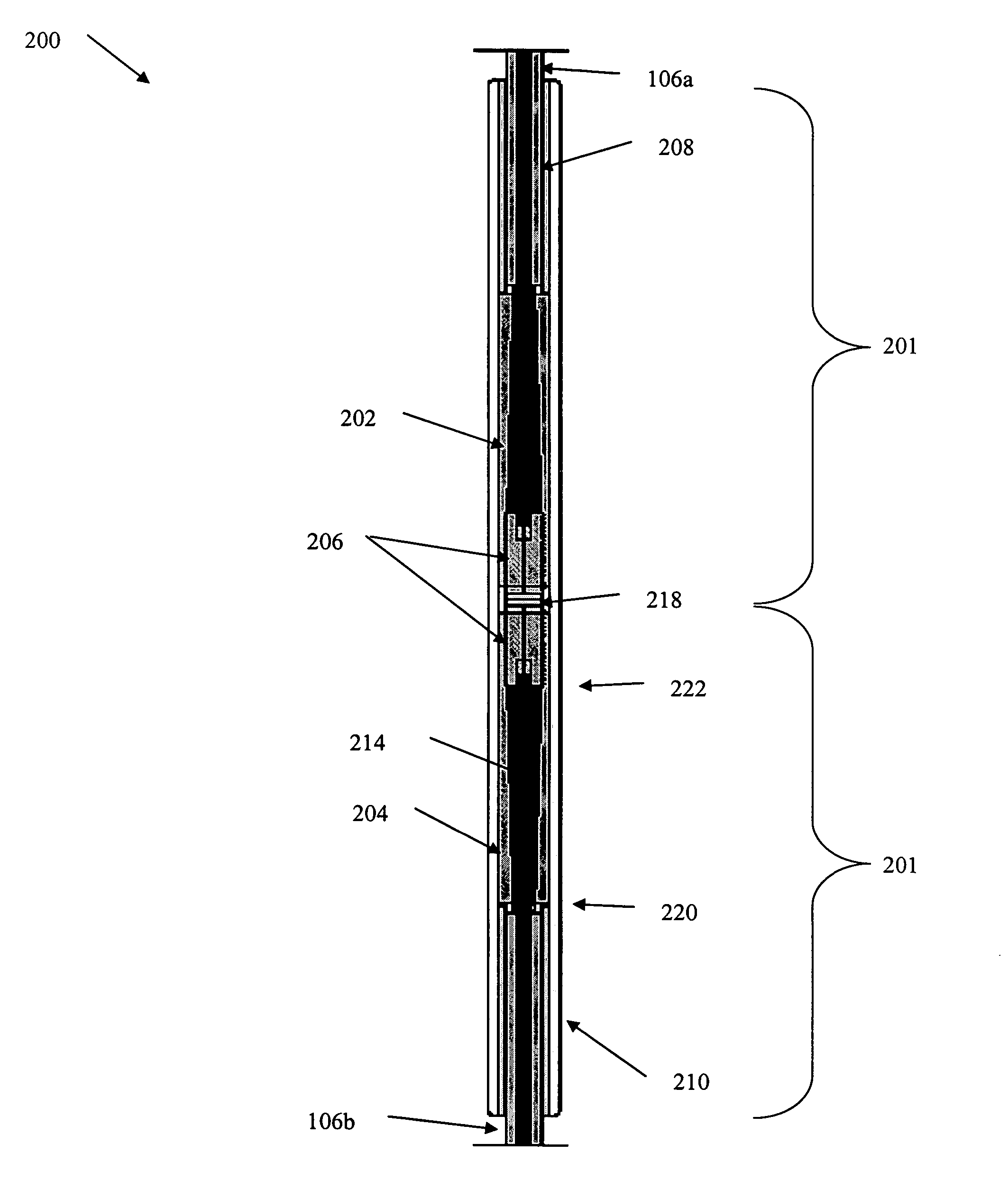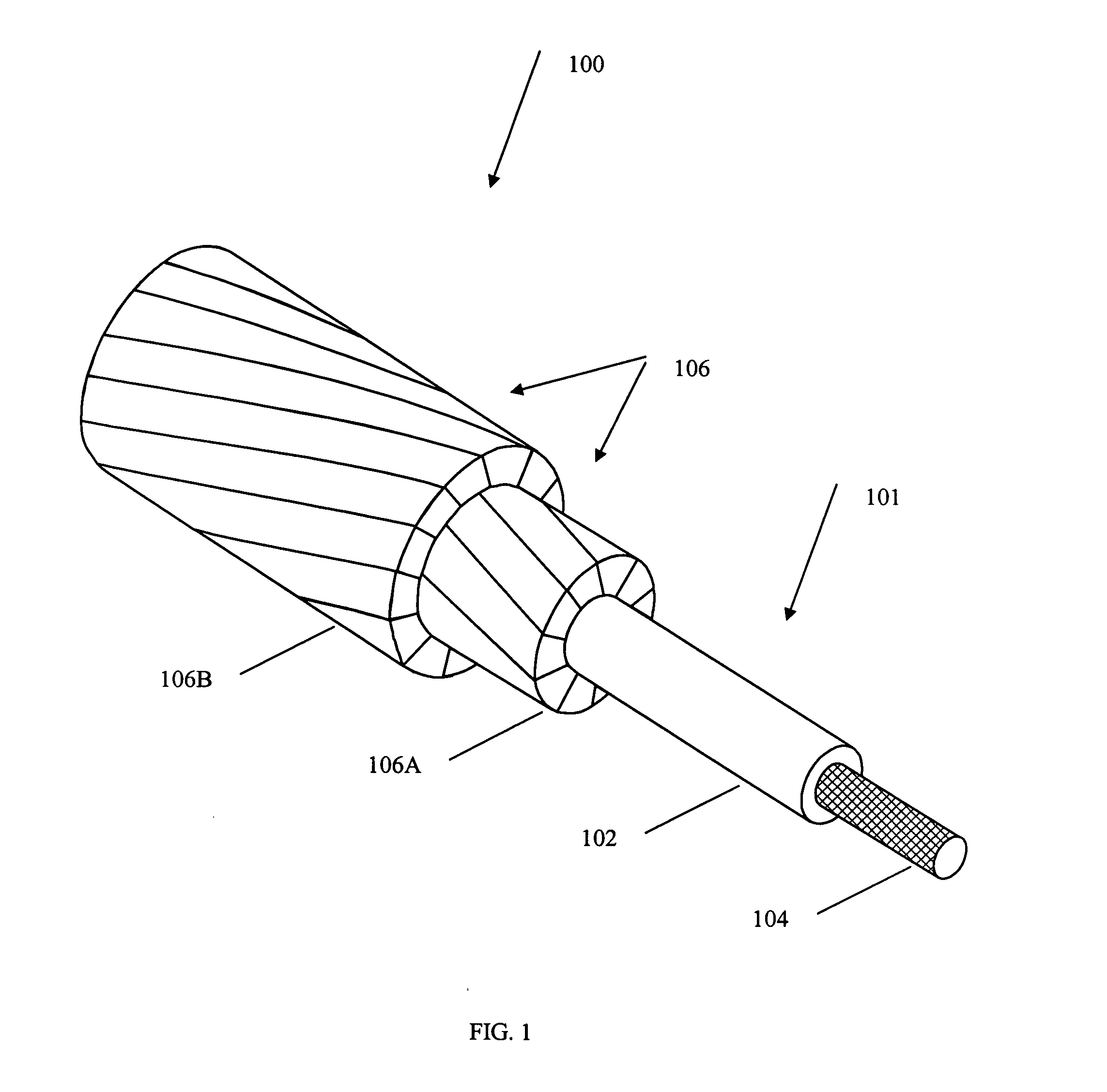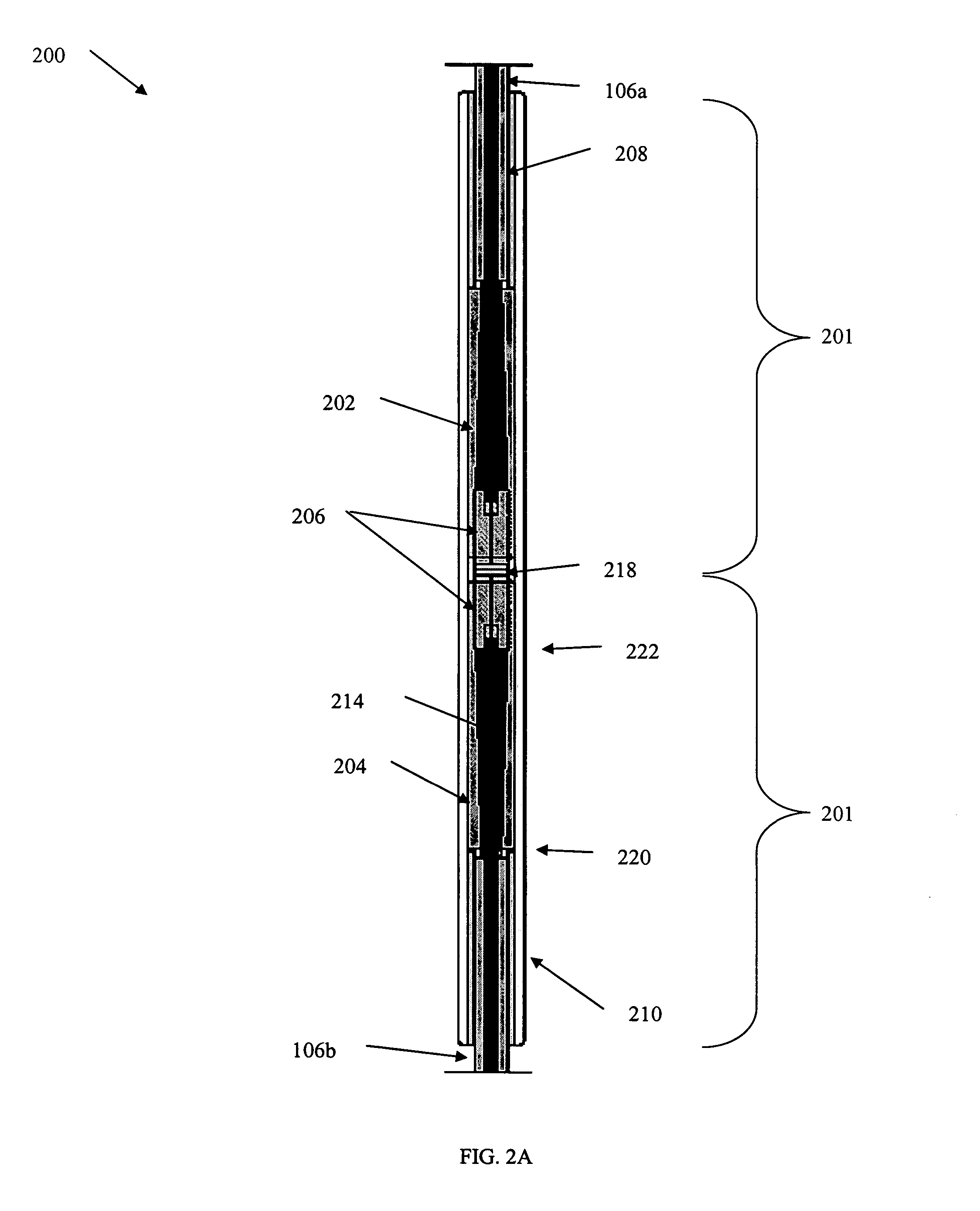Collet-type splice and dead end use with an aluminum conductor composite core reinforced cable
- Summary
- Abstract
- Description
- Claims
- Application Information
AI Technical Summary
Benefits of technology
Problems solved by technology
Method used
Image
Examples
Embodiment Construction
The present invention will now be described more fully hereinafter with reference to the accompanying drawings, in which exemplary embodiments of the invention are shown. This invention may, however, be embodied in many different forms and should not be construed as limited to the embodiments set forth herein. Rather, these embodiments are provided so that the disclosure will fully convey the scope of the invention to those skilled in the art. The drawings are not necessarily drawn to scale but are configured to clearly illustrate the invention. The invention is as set forth in the claims. Throughout this description, the term “couple”, “couples”, or “coupled” means any type of physical attachment or connection of two parts.
The present invention relates to methods and apparatuses to splice together two composite core 101 reinforced cables. FIG. 1 illustrates one embodiment of an ACCC reinforced cable 100. FIG. 1 illustrates an ACCC reinforced cable 100 having a reinforced carbon ...
PUM
| Property | Measurement | Unit |
|---|---|---|
| Luminous flux | aaaaa | aaaaa |
| Pressure | aaaaa | aaaaa |
| Pressure | aaaaa | aaaaa |
Abstract
Description
Claims
Application Information
 Login to View More
Login to View More - R&D
- Intellectual Property
- Life Sciences
- Materials
- Tech Scout
- Unparalleled Data Quality
- Higher Quality Content
- 60% Fewer Hallucinations
Browse by: Latest US Patents, China's latest patents, Technical Efficacy Thesaurus, Application Domain, Technology Topic, Popular Technical Reports.
© 2025 PatSnap. All rights reserved.Legal|Privacy policy|Modern Slavery Act Transparency Statement|Sitemap|About US| Contact US: help@patsnap.com



